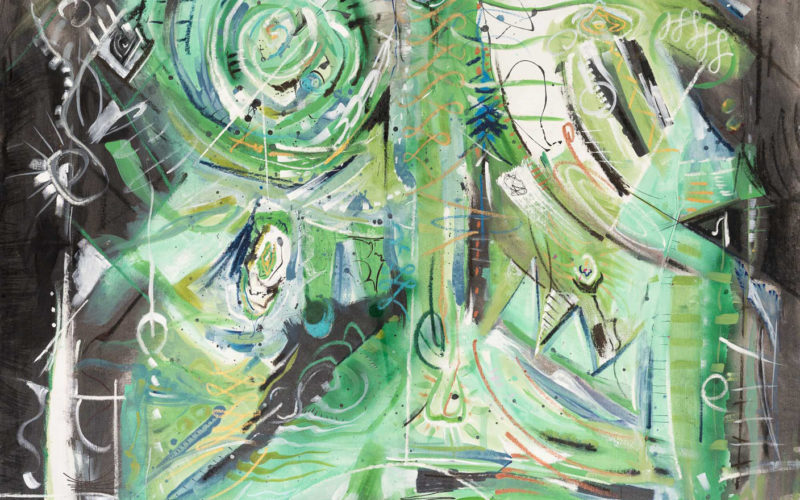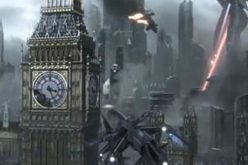BECCA MARTIN-BROWN
bmartin@nwadg.com
“SHELTER,” an exhibit by artist Byron Keith Byrd, and “domicile” by Stefani Byrd, his niece, hold a unique place in the history of Fenix Fayetteville. Together with other Fenix artists, they make up the first exhibit of 2021 for the art collective — and the last at the gallery space at 16 W. Center St.
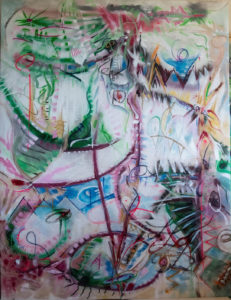
Byron Keith Byrd says he is trained and accomplished in drawing, watercolor and oil, “which is most aligned to my nature,” he says.
(Courtesy Image/ Theobald Creative)
The new year also marks a change of status and of name for the arts organization. Now known as the Visual and Performing Arts Center at Fenix, it has received 501(c)3 status as a nonprofit. And come spring, it will make its home on Mount Sequoyah, says Board Chairwoman Laurie Foster.
“We, unfortunately, lost our lease at our current location,” Foster says. “But we are doing well and are excited to be moving in March to a gallery space at Mount Sequoyah and are looking forward to collaborating with the Mount Sequoyah Creative Center to bring the arts alive on the mountain.”
‘SHELTER’
Byron Keith Byrd
“SHELTER” is also unique by its own merit. Byron Byrd is a New York artist, but the large-scale abstract expressionist paintings in this exhibit were created while he was in quarantine in Northwest Arkansas beginning in March 2020.
“Byron Keith Byrd seems to have an intuitive sense of composition, as demonstrated in his most recent paintings,” says Shannon Dillard Mitchell, an art curator and treasurer of the Fenix Board. “His choice of media – often a combination of oil, spray paint, oil stick and more – gives form to his lyrical abstraction, while his fluidity of gesture paired with bold mark making brings it all into balance. The addition of diamond dust as an element in the larger canvases adds a layer of luminosity that encompasses Byrd’s joie de vivre.”
Byrd started his art career with crayons on his bedroom wall, he remembers.
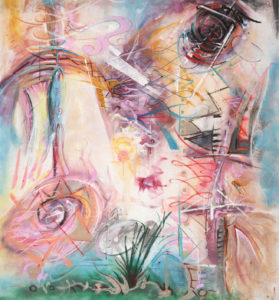
“Although created in the studio, many of these paintings were inherently influenced by the natural world just beyond Byrd’s window,” independent art curator Shannon Dillard Mitchell says of “SHELTER.”
(Courtesy Image/ Theobald Creative)
“I grew up on a 500-acre working farm in northwest Georgia, where I felt misplaced to say the least,” he explains. Making art was much preferred over “tending the massive vegetable gardens, working in the hay fields or tending to the varied livestock.”
“After several wall touch-ups by my mother — who wrote poetry — I was given an oil paint set at the age of 13,” he relates. “My first painting was of the very farm which took me so many years to finally appreciate: grandfather’s barn reflecting in the lake.
“Being an artist was my vision and direction for as long as I can remember,” Byrd adds. “Upon graduating from University of West Georgia, Carrollton, I took my BA degree to New York City and was included in a group show on Madison Avenue within one year.
“I did supplement my income by creating windows at Macy’s Herald Square,” he explains. “The Christmas windows were my favorite to install, which gave me the idea to do a book on Christmas Trees which was the best-selling title (‘O Christmas Tree’) for Rizzoli International Publications that year. I am also the co-author of ‘The Christmas Tree at Rockefeller Center.’ I have done trees for Baccarat, Harry Winston, Hallmark, ‘The Today Show’ — and my beloved Mount Sequoyah! I currently do one or two trees each season in the homes of private clients, but other than that, I am a full-time artist.”
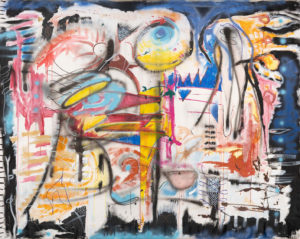
For the “SHELTER” exhibition now on show at Fenix, Byrd used oil, spray paint, oil stick, markers and diamond dust on canvas. Asked what he’d say about his art to someone who could not see, Byrd says he’d encourage that viewer to touch the surface, “as my work can be quite textural. But my verbal explanation is the same for everyone; I simply want to capture a mood, a feeling, rather than anything tangible.”
(Courtesy Image/ Theobald Creative)
Like so many people, Byrd saw his artistic plans for 2020 derailed after a painting excursion to Phoenix in January.
“Afterwards, I visited Stefani for a couple of weeks in February en route to Florida,” he recalls. “Once there, New York and South Florida became hotspots for covid, so Stefani suggested that I return to Fayetteville and start a new series.
“I visited Fenix Gallery during my visit last February and envisioned a show there, as I am a big fan of creative visualization /manifestation. My mother’s last gift to me was a copy of ‘The Magic of Believing’ by Claude M. Bristol. Although originally published in 1948, I find the tome timeless, and I refer to it constantly. Exactly one year later, here we are…
“My journey to abstract Expressionism happened over time,” he adds. “From the realistic works during my younger years to the Surrealistic images during formal training, as well as that very first show in New York. But, I must say, I have finally found my voice, and I do believe that I am creating the best work of my career to date.”
‘domicile’
Stefani Byrd
Stefani Byrd, Byron’s niece, was trained as a traditional black-and-white darkroom photographer, but she evolved in the late 2000s to make “large-scale interactive forms of experimental public art that were a mixture of video installation and street theater.”

Byrd started his art career with crayons on his bedroom wall, he remembers. “After several wall touch-ups by my mother — who wrote poetry — I was given an oil paint set at the age of 13,” he relates.
(Courtesy Image/ Theobald Creative)
“These pieces involved improv performers who engaged with the audience via a live feed on a projection screen or a video monitor [and] posed questions about important social topics like gender privilege in public space, ethnocentricity and experiences of ‘othering.’
“I was very interested in interactive art,” she goes on. “This led me to Southern California to learn about things like physical computing, coding and sensors in order to create interactive forms of art that didn’t involve live performers.”
Byrd is currently a visiting assistant professor for experimental media arts in the University of Arkansas School of Art, having previously taught at UC San Diego and UC Irvine. Her installation at Fenix, titled “domicile” and made with LIDAR scanning technology, explores how the pandemic and quarantining have changed our collective relationship to domestic spaces.
“It’s been exciting to bring this discussion about emerging forms of technology as part of an artistic practice to Arkansas,” she says. “I’ve found Northwest Arkansas to be open to these conversations about new ways of defining an artistic practice in addition to traditional tools like painting, drawing and object making.”
As an example of that innovation, she talks about working with students who work primarily with ceramics or sculpture and “teaching them how to make objects that respond to touch that then triggers video or a sound to play.”
“That wasn’t necessarily something they knew was possible, and it broadens their definition of what their art practice can be and empowers them to not be afraid of these tools,” she says. “The mantra I tell students over and over is ‘fear no software.’ It helps to build their confidence in themselves and what they’re capable of.”
The exhibition at Fenix is Stefani’s first with her uncle and “the first show I’ve done locally which feels important.”
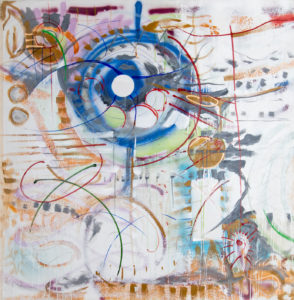
Byron Keith Byrd’s work “Plum Ripe” (oil on canvas, 60-by-60 inches) was accepted into a virtual exhibition at the Hammond Museum and will be featured on that website until December 2021 (hammondmuseum.org/january-virtual-exhibition). Byrd is one of 28 international artists selected for the New York exhibition in addition to his current showcase at Fenix Fayetteville.
(Courtesy Image/ Theobald Creative)
“I would describe the images generated for the project ‘domicile’ as embracing something called the ‘glitch aesthetic,’” she says. “A glitch is where something goes wrong, it pixelates, it corrupts, or cracks. Where these scans break apart and become fragmented and pixellated is what was exciting to me. I was less interested in using 3D laser scanning as a way to create a perfect rendering of my domestic space, but instead to look for the slippage and the fracturing of when the technology ‘fails.’
“Where a traditional camera creates a flat two-dimensional image, these images are telling us about volume and are telling a story about space. That was very interesting to me.
“I want to be able to share my research and art practice with the community,” Byrd adds. “I’ve been focused on showing work internationally this last year, but I didn’t want to forget about home and to also have these conversations here.”
Additional gallery spaces will feature work by Fenix members responding to the themes of “SHELTER,” such as the pandemic, experiences of isolation, political polarization, the outcry for social justice, and notions of home and safety, says Fenix spokeswoman Kinya Christian.
FAQ
‘SHELTER’
WHEN — Through Feb. 24; hours are 11 a.m.-2 p.m. Wednesday-Friday and 10 a.m.-1 p.m. Saturday
WHERE — Visual and Performing Arts Center at Fenix, 16 W. Center St. in Fayetteville
COST — Free
INFO — www.fenixfayettevilleart.com
FYI — Per Arkansas Department of Health Covid-19 safety guidelines, visitors are required to wear face coverings and practice social distancing when visiting the gallery.
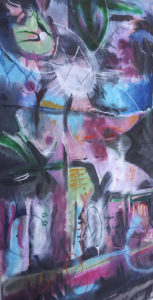
“With ‘The Ozark Collection,’ Byrd has captured the energy of abstraction — via honest and well-crafted technique — and brought it to a heightened level of expression,” adds Shannon Dillard Mitchell.
(Courtesy Image/ Theobald Creative)
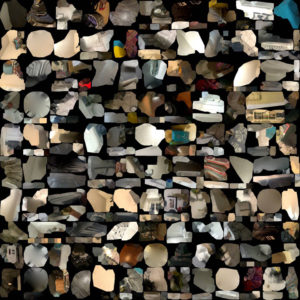
“Through factors like the online disinhibition effect, people can become the worst versions of themself and it’s easier to ‘other’ groups of people who you perceive to be different from yourself,” muses artist Stefani Byrd. “We’ve seen the dark side of this playing out in politics right now and the thin wall between views expressed (and formed) in digital spaces playing out in physical spaces. I see my research play out on the daily news. Essentially, the lines between the digital and the physical world have never been thinner.”
(Courtesy Image/Stefani Byrd)

